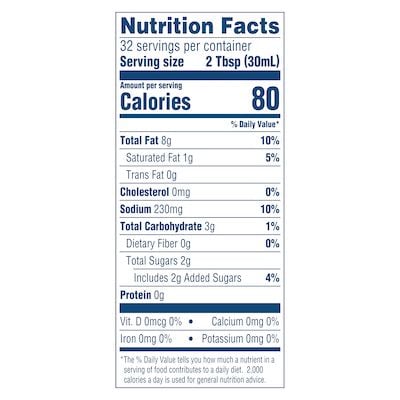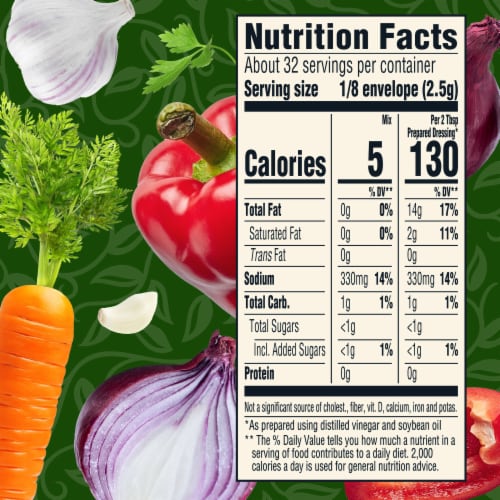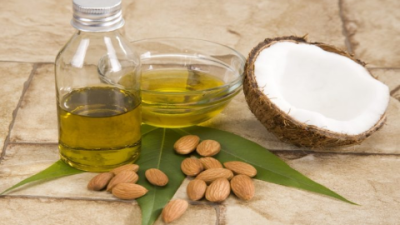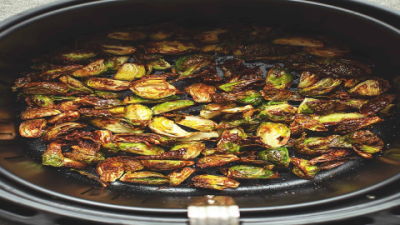Let’s start by taking a closer look at what’s actually in your Italian salad dressing. Whether you’re keeping an eye on calories or just curious about what you’re drizzling over your salad, here’s a simple breakdown of the key nutrition facts:
- Calories per serving: Usually between and calories for about tablespoons
- Fats: Mostly healthy fats from olive oil, around to grams
- Carbs: Very low, usually to grams from herbs and spices
- Proteins: Less than gram, so not much here
- Sodium: Can vary a lot, anywhere from to mg per serving
- Sugars: Typically to grams, depending on if sweeteners are added
Knowing these numbers helps you enjoy your salad without any surprises!
Health Benefits (and a Few Things to Watch Out For)
Italian salad dressing isn’t just tasty; it has some good stuff going for it, too. Here are five benefits you might not have thought about:

- It’s packed with heart-healthy fats thanks to olive oil.
- The herbs like oregano and basil bring antioxidants to the table.
- It usually has less sugar compared to creamy dressings.
- The vinegar can help with digestion.
- It adds flavor without piling on a ton of calories.
But, like anything, there are a few things to keep in mind:
- Sodium levels can be high, which isn’t great if you’re watching your blood pressure.
- Some store-bought versions sneak in added sugars.
- It’s easy to overdo it—remember, a little goes a long way!
Homemade vs. Store-Bought: What’s Better for You?
Wondering if making your own Italian dressing is worth the effort? Here’s the scoop:
Store-bought: Super convenient and ready to go, but sometimes packed with preservatives, extra salt, and sugar. The nutrition info is right there on the label, which is helpful.
Homemade: You get to control every ingredient and can use fresh herbs and quality olive oil. It takes a bit more time but often tastes better and is healthier.
Here’s a quick and easy homemade Italian dressing recipe with nutrition facts:
- 1/ cup olive oil (about calories)
- tablespoons red wine vinegar (around calories)
- teaspoon dried oregano
- teaspoon garlic powder
- Salt and pepper to taste
This comes out to roughly calories per 2-tablespoon serving, mostly from healthy fats!
Counting Calories? How Italian Dressing Fits Into Your Goals
If you’re trying to manage your weight, Italian dressing can be your friend if you use it wisely. Here’s how:
- Stick to the typical serving size—about tablespoons equals to calories.
- Measure your dressing instead of guessing.
- Try using a spray bottle to lightly coat your salad.
- Mix in some lemon juice or vinegar to cut down on oil without losing flavor.
- Look for low-fat or reduced-calorie store options.
Remember, dressing is meant to enhance your salad, not drown it!
The Ingredients That Make Italian Dressing So Special
What exactly gives Italian salad dressing its signature taste and nutrition? Here’s a quick rundown:
- Olive oil: The main ingredient, full of good fats and antioxidants.
- Vinegar (red wine or white): Adds tang and can help with digestion.
- Herbs like oregano, basil, and parsley: Bring flavor and nutrients.
- Garlic and onion powder: Boost taste and may support your immune system.
- Salt and sugar: Used in small amounts but watch for extra in store-bought dressings.
Italian Dressing for Every Diet: Keto, Vegan, Gluten-Free & More
No matter what kind of diet you follow, Italian salad dressing can usually fit right in:

- Keto: Great choice because it’s low in carbs and high in healthy fats.
- Vegan: Naturally plant-based, just double-check for any honey or dairy in some brands.
- Gluten-Free: Usually safe, but it’s smart to check labels for hidden gluten.
- Low-Sodium: Homemade or low-salt versions are best if you’re watching salt intake.
- Diabetic-Friendly: Low sugar content makes it a solid option, but portion control is still key.
How to Read Italian Dressing Labels Like a Pro
Nutrition labels can be tricky, but here’s a simple way to pick the healthiest Italian dressing:
- Check serving size first.
- Calories: Aim for to per serving.
- Fats: Look for mostly unsaturated fats, avoid trans fats.
- Sodium: Try to keep it under mg per serving.
- Sugars: Keep it below grams per serving.
- Ingredients: Watch out for added sugars like corn syrup or cane sugar, and preservatives.
Top Italian Salad Dressing Brands: Nutrition and Taste Ranked
Here’s a quick look at some popular Italian dressings, ranked by nutrition and flavor:
- Brand A: Low sodium, organic, about calories per serving.
- Brand B: Classic taste, moderate sodium, calories per serving.
- Brand C: Budget-friendly, a bit higher in sugar, calories per serving.
- Brand D: Gourmet option, low sugar, calories per serving.
- Brand E: Vegan-certified, moderate calories, calories per serving.
Pro tip: Always check the nutrition facts before you buy!
Italian Dressing and Heart Health: What You Should Know
Italian salad dressing can be good or bad for your heart, depending on how you use it.
- The olive oil provides healthy fats that can help lower bad cholesterol.
- Too much salt can raise blood pressure, so keep an eye on sodium.
- The herbs have antioxidants that fight inflammation and protect your arteries.
- Balance is key—use dressing in moderation and pair it with a heart-healthy diet.
Simple Homemade Italian Dressing Recipes (With Nutrition Info!)
Want to whip up your own Italian dressing? Here are three easy recipes with nutrition details so you can enjoy fresh, flavorful salads without the guilt:
Recipe 1: Classic Italian Dressing
- Olive oil, red wine vinegar, oregano, garlic, salt, and pepper
- About calories per 2-tablespoon serving
Recipe 2: Low-Calorie Italian Dressing
- Half the usual olive oil, lemon juice, herbs, no added sugar
- About calories per 2-tablespoon serving
Recipe 3: Spicy Italian Dressing
- Olive oil, balsamic vinegar, crushed red pepper, garlic, herbs
- About calories per 2-tablespoon serving
Try these out and find your favorite!
Wrapping It Up
Italian salad dressing is more than just a tasty topping—it’s a great way to add healthy fats, antioxidants, and bold flavor to your meals. Whether you buy it or make it yourself, keeping an eye on nutrition facts helps you enjoy your salad without any guilt. Give those homemade recipes a try and discover the perfect balance of flavor and health for you!



